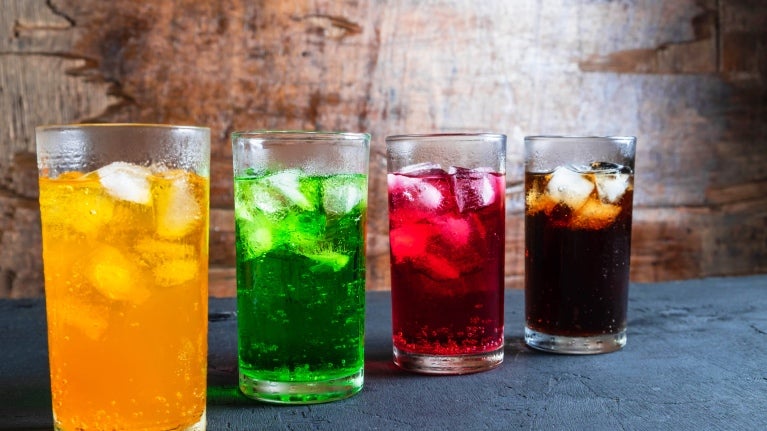
4 Considerations to Help You Choose the Right Beverage Solutions
With so many options, how do you know which beverages are the best for your establishment?
Having a strong beverage selection is vital to customer satisfaction. But it’s not just about a variety of hot, cold and hand-mixed options. A successful beverage program helps you serve customers quickly and hassle free, which is not as simple as just selecting a coffee vendor or soda fountain dispenser.
To assemble the most appropriate solution for the business, an operator must take into account issues of space, equipment, labor and clientele. Here are a few key factors to consider before making any decisions about your beverage offering:
1. Traffic and Volume Patterns
Some establishments need to accommodate big morning crowds while others contend with moderately steady business throughout the day. Each requires a solution appropriate to each situation.
- High-volume settings might require high-volume coffee brewing solutions that can consistently brew, hold and serve hundreds of cups per day. But that efficiency can come at the cost of freshness or waste in smaller businesses, serving a lower volume.
- One-touch pod or espresso-style machines offer authentic house-style coffee, espresso and cappuccino drinks at the touch of a button. However they do so one cup at a time, making them suitable for operators with moderate traffic throughout the day.
- Lower-volume businesses might make do with pitchers of iced tea, sodas, and may even opt for hand-mixed beverage options. High-traffic establishments can benefit from refrigerated juice, tea and soda dispensers that save staff time and hassle, simplifying service over the course of a busy day.
2. Keep it Cold
It goes without saying that cold beverages need to be served cold, but doing so presents its own set of considerations.
- Lower-volume businesses that serve pitchers of iced tea and juice or soda might get by with a reliable ice machine, while higher-volume places that do a brisk business in soft drink sales might require large commercial coolers that take up floor or kitchen space.
- Refrigerated juice, tea and soda dispensers that utilize frozen or ambient products free up that precious cooler space but require freezer or storage space – plus the necessary counter space – to accommodate the equipment.
- It’s worth noting, too, that refrigerated juice, tea and soda dispensers will require electrical and plumbing connections that will make placement a point of consideration. Grab-and-go coolers, on the other hand, will just need access to a power source.
3. All the Right Staff
Keeping a tight rein on labor costs is top of mind for every foodservice operator. By choosing the right equipment for the job, a savvy operator can reduce labor costs while still satisfying his or her customers.
- Hand-poured specialty coffee is all the rage, but those pourovers, vacuum presses and perfectly pulled shots of espresso require a staff of well-trained baristas to successfully pull off. Complicated equipment like traditional espresso machines also require frequent and time-intensive cleaning regimens.
- Whereas traditional espresso machines require training and practice to operate, newer equipment uses technology to produce a wide range of coffee-based beverages with the push of a button, more suitable for operations with lean staffing resources.
- Today’s consumer wants his or her fruit- and vegetable-based beverages to be fresh, fast and customizable, giving rise to the corner juice bar. But all those blenders require staffers to load, run and clean the equipment, which is why many juice bars are small operations with limited menus.
- Refrigerated juice dispensers that utilize fruit juices and purees offer refreshment, convenience and ease of use. This type of equipment is particularly helpful in high volume establishments or those with limited resources, leaving space to focus on customer service while still delivering a high quality product, if not providing the farm-fresh experience some may crave.
4. Keep it Running
Coolers break, dishwashers leak and freezers stop freezing – all calamities that can bring a smoothly running operation to its knees. Like any equipment, proper care and maintenance is essential in keeping beverage equipment up and running and customers served. Plans should be in place in case of a maintenance emergency. For every minute your equipment is down, your establishment is losing money, so repairs, maintenance and technician support are big considerations.
- Before committing to any piece of equipment, an operator should thoroughly research the amount of time and effort it takes to clean and maintain it. Some require little more than daily cleaning while others demand deeper and more complicated maintenance programs.
- If the equipment requires the occasional replacement part, what are the costs of those items, from where will they come, and how quickly will they arrive?
- If and when things do go wrong, will that piece of equipment be covered by warranty? If so, how quickly will the work be accomplished? If not, who will be performing the repair work? Different manufacturers provide different levels of technician support for their equipment, which can influence purchase decisions.
- With so many moving parts, it’s no surprise that some operators try multiple beverage programs before landing on the best solution. The key to making a good decision the first time is to ask yourself those questions and carefully weigh both the realities of your current business with aspirations for the future. Restaurants, hotels, universities or hospitals – independent of your establishment, these considerations are the common denominators for a beverage menu that keeps customers coming back.